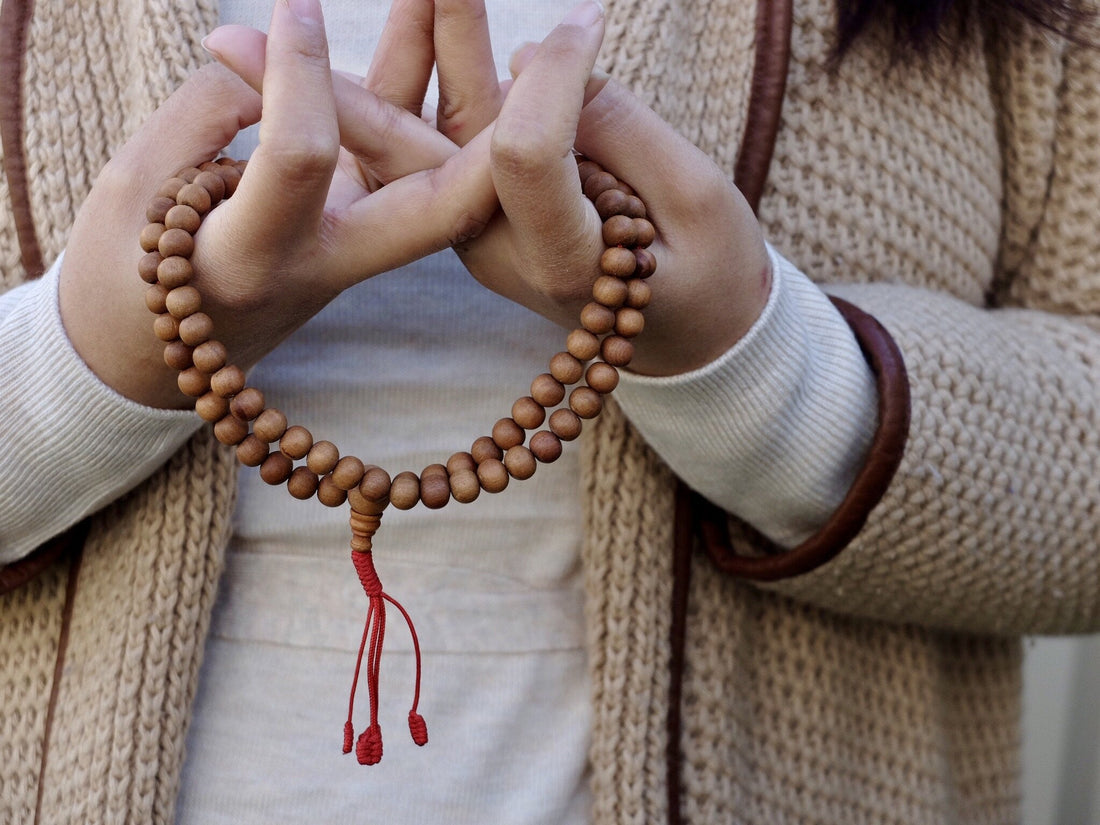
Using 108 Tibetan Mala Beads
Share
People often ask us what the significance of mala beads is. We usually answer by saying that it is a tool to count mantra recitations and also something that people wear to show commitment to their spiritual journey.
Malas (thra-nga in Tibetan) are very common across Tibetan Buddhist communities, and can be seen on people's wrists and necks or one one's hand as various mantras (such as Om Mani Padme Hung) are recited.
Using a Mala
In Tibetan Buddhism, Malas usually have 108 beads, and are used as a tool to count the number of recitations, starting at the larger and most prominent Guru bead. They are generally held between the thumb and index finger. So one would recite the mantra once and then move one bead to count it. A complete round of your mala would be considered to be 100 mantra recitations. The 8 additional beads are there to make up for any missed recitations and mistakes.
Once you have completed one round, then you start again but in reverse direction. Quite often there will be two or more additional mala counters (beads/tassels) at set intervals to indicate your progress.There is no right or wrong in deciding which hand you hold the mala with.
Malas should also be treated with respect as they indicate your spiritual journey. Tibetans will often ask their teachers to bless the malas and touch them on sacred sites and objects. Malas should not be left on the ground and other objects should not be placed on them.
Make and Materials
Malas are often made from a range of materials, including wood, stones, shells and animal bones. Most Dharma teachers will tell you that the type of malas you use does not matter, as long as you use them and recite the mantras.
Our Malas
We hope that we are able to bring to you a mala that becomes a part of your spiritual journey. Our 108 mala beads are made from a range of natural materials, with no additional dyes, scents, etc added. They have been strung by skilled Nepalese artisans for additional durability.
